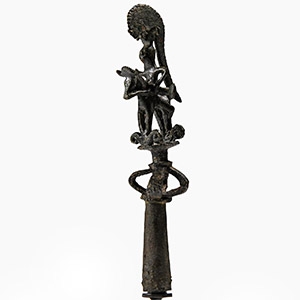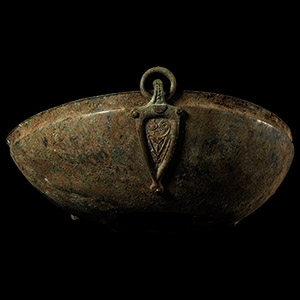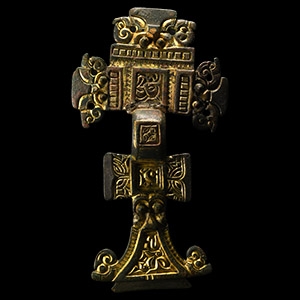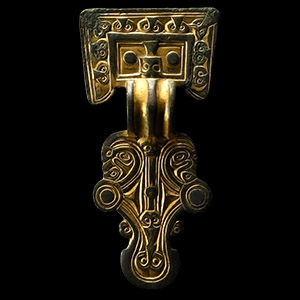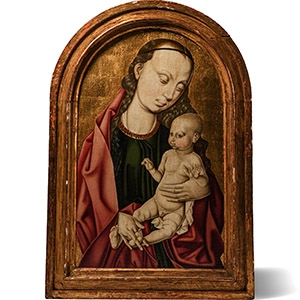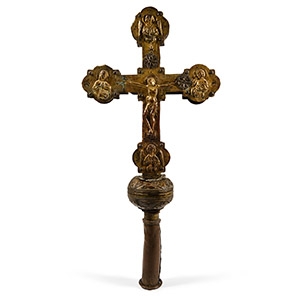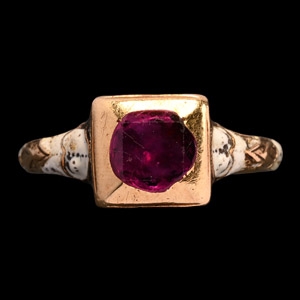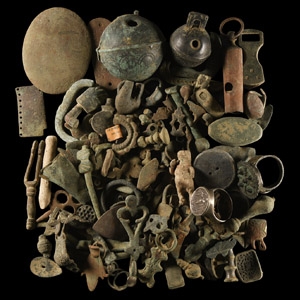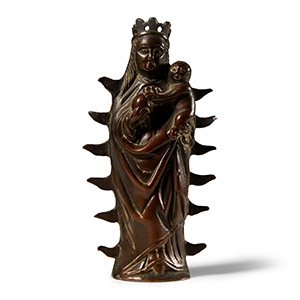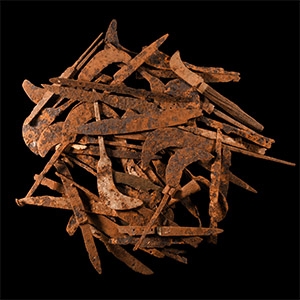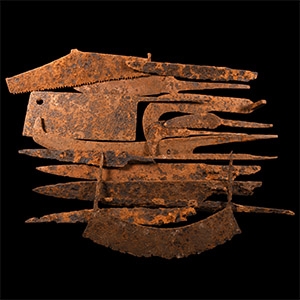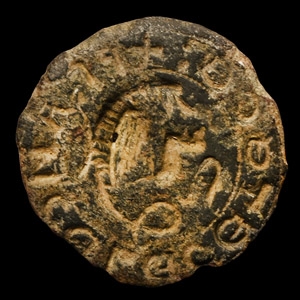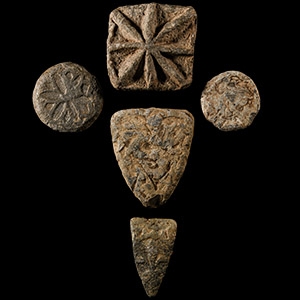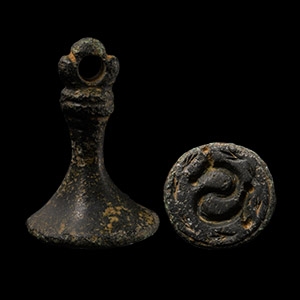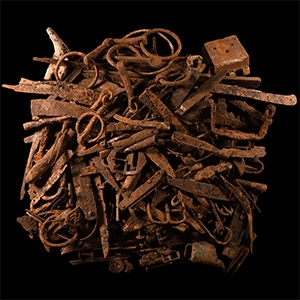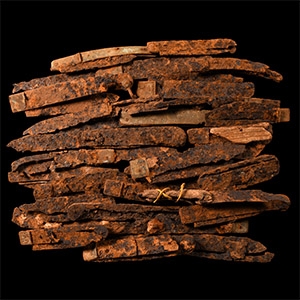Home > Auctions > 5 - 9 September 2023
Ancient Art, Antiquities, Natural History & Coins
Auction Highlights:
Found Berkshire, UK.
Private collection, Auvergne, Central France.
Daguerre Societe de Ventes Volontaires, 12 December 2016, lot 50.
Ex central London gallery.
From the collection of a Northern Ireland gentleman.
Ex private Merseyside, UK, collection.
Acquired 1980-2015.
Ex Abelita family collection.
Acquired 1990s-early 2000s.
East Anglian private collection.
Cf. Cowgill, J. et al., Knives and Scabbards. Medieval Finds from Excavations in London, London, 1987, figs.76, 118, 139, for similar 14th-15th century A.D. examples of knives.
A variety of 14th and 15th century forms of knives are represented here including several with stepped backs. In the 14th century the blades of the knives became to be longer and thinner and frequently marked.
English collection, 1980s.
Acquired on the UK art market.
Ex property of an Essex gentleman.
Ex private Merseyside, UK, collection.
See Bequest, F., Catalogue of the finger rings Early Christian, Byzantine, Teutonic, Mediaeval and later, London, 1912, no.252, for the typology.
The use of seals became more and more essential during the time when the majority of the population was illiterate; the use of signet rings continued until after the fall of Rome in the West. With the establishment of heraldry, the armorial signet was generally adopted by all those entitled to bear arms. A considerable proportion of medieval rings were signets, with portraits, names or monograms, and emblems such as the cross, most of these having the designs cut in a metal bezel.
Acquired 1990s-early 2000s.
East Anglian private collection.
Cf. Cowgill, J. et al., Knives and Scabbards. Medieval Finds from Excavations in London, London, 1987, figs.57-63, for similar 14th century A.D. examples of knives.
Aside from the actual cut marks that are observed on animal bones following archaeological excavation, the butchery implements found from the medieval period are of considerable importance. The cut marks seem to indicate a more refined style of butchery with less use of the cleaver for disarticulation and a greater reliance on knives. The defining characteristic of the butchery knives is that they were sharp-edged and likely to have been made in much the same way as the cleavers, i.e. with a steel edge to maintain sharpness.
Found St Osyth, Essex, UK.
Ex Simmons Gallery, London E11, UK, in the 1990s.
From a North London collection.
Found Berkshire, UK.
Accompanied by a copy of the British Museum's Portable Antiquities Scheme (PAS) report no.BERK-9D4B93.
Acquired 1990s-early 2000s.
East Anglian private collection.
Cf. Leahy, K. and Lewis, M., Finds Identified II, London, 2020, pp.146-147, for a similar double-looped medieval buckle.
Double-looped medieval buckles were often formed of a D-shape and a more and less smaller rectangle. During the Renaissance they often were realised with a moulded rosette on the edge of both D-shaped loops.
Acquired 1990s-early 2000s.
East Anglian private collection.
Cf. Cowgill, J. et al., Knives and Scabbards. Medieval Finds from Excavations in London, London, 1987, nos 309-310, for similar knives.
The folding knives are distinguished by the absence of a tang, which sometimes can be replaced by a thumb piece. Usually there is a hole piercing the blade for the pivot to fasten the blade to the handle.
1309 - 1320 of 2453 LOTS

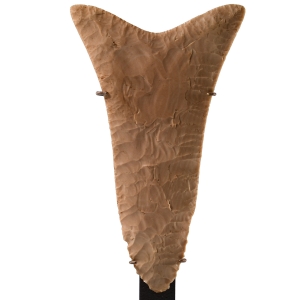
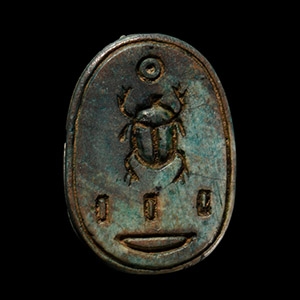
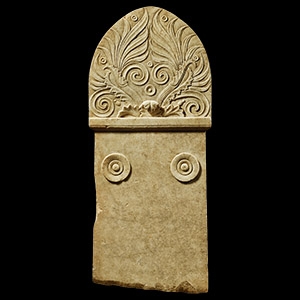
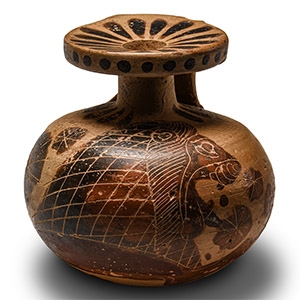
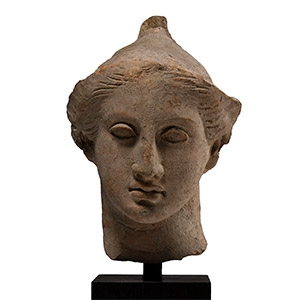
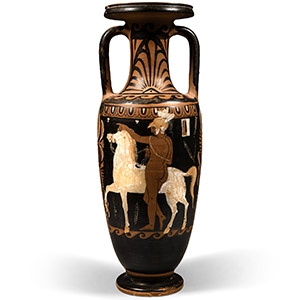
.jpg)
.jpg)
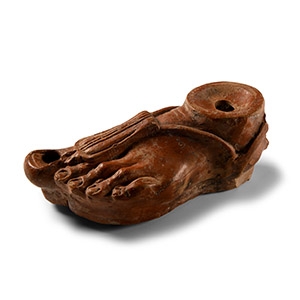
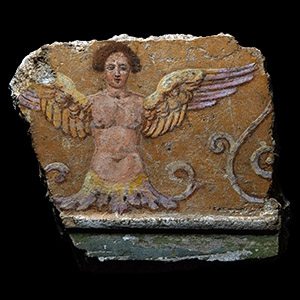
.jpg)
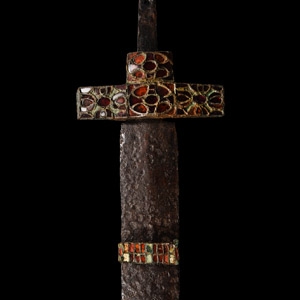
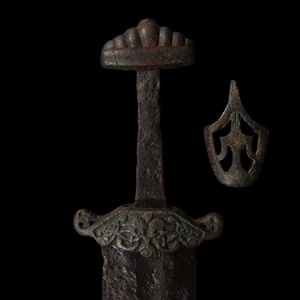
.jpg)
